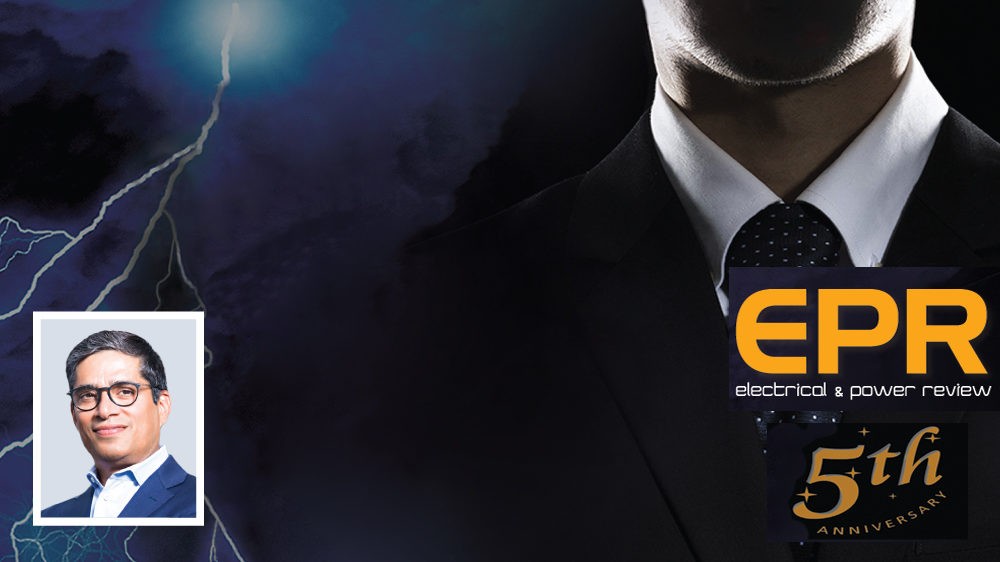Leveraging technology to be a game changer
By EPR Magazine Editorial November 28, 2017 4:36 pm IST
By EPR Magazine Editorial November 28, 2017 4:36 pm IST

Kunwer Sachdev, Managing Director, Su-Kam.
Don’t expect immediate results
The government has taken a slew of initiatives to reinvigorate the power sector. For instance: Over 13,000 villages have been electrified. India recorded power surplus year which is a commendable achievement. The country also witnessed the highest ever increase in transmission capacity for enabling access to affordable power to customers while record low tariffs were achieved in wind and energy. Leveraging technology effectively was well- evident through the launching of apps to enhance transparency in the sector. These initiatives, if implemented effectively, will go a long way in improving the health of the power sector, believes Kunwer Sachdev, Managing Director, Su-Kam. he adds, “One can’t expect the immediate results. It will take time for these initiatives to start bearing fruit.”
Although the government is encouraging the use of solar energy, the industry requires a more proactive approach like the framing of strong policies especially geared to promote the solar energy, Sachdev suggests. “We also need to educate more people about the benefits of solar energy.”
He also recommends that sufficient incentives should be provided to households to go solar and net-metering should be actively promoted. He says, “Although the net-metering policy is in place, lack of adequate financial incentives acts as an impediment. It may take 3-4 months from the date of application to receiving a grant of connectivity even for a residential rooftop solar system. There are further shared approvals and clearances between multiple departments such as the regulatory commission, state nodal agencies, discoms, urban local bodies, etc, which may cause delays. The process of obtaining clearances should be made unified, centralised and hassle-free.”
Another major challenge is the non-availability of skilled and trained manpower. This couples with loosely drafted rooftop leasing agreement and sharing of roles and responsibilities between the developer and the rooftop owner, opines Sachdev.
He says, “The government should also provide subsidy by local state electricity board on generation instead on the installation of a solar system. Though subsidies are available, the government needs to make it more easily accessible and encourage people to use it.”
Slew of initiatives to make industry healthy
Over the past one year, the government has taken a slew of initiatives to strengthen the sector like the launching of apps which will ensure accountability and enhance transparency. Rural electrification is a positive step in improving access to power in the rural sector. “A change in the attitude of discoms has also been observed towards net-metering. More and more states are adopting the net- metering policy which will go a long way in enhancing power security,” says Sachdev.
Su-Kam’s performance during the past one year
“Our company has performed fairly well over the past year,” says Sachdev. Su-Kam has come out with an array of innovative ‘Make in India’ quality products like hybrid grid tie inverter and the like. Solar energy brings immense benefits but since people are not yet fully aware of it, the company stressed more on spreading awareness about solar energy and educating people about its benefits. To this effect, business meets were organised in major cities across India that was specially geared to deliberate on India’s solar energy roadmap.
In addition, Su-Kam played an instrumental role in helping offices, institutions, schools and colleges in going solar which can be regarded as the future of India’s energy roadmap.
Competing with Chinese products
In the wake of proliferation by cheap Chinese products in the Indian market, Su-Kam is coming out with ‘Make in India’ products with state-of-the-art technology geared to ensure smooth and hassle-free operations by consumers. “We are confident that our products will low-quality Chinese products a fight for life. We are making highly efficient solar products that will enable the return on investment (ROI) to be reduced to 3 years from 5 years since we are providing solutions that can convert normal inverters to a solar inverter at a very low cost,” says Sachdev.
Recently, Su-Kam launched the grid tie inverter. It can work at even voltage as low as 80 to 450 volts DC and 150 to 280 volts AC and is able to generate solar power even during low periods of sunshine. Leveraging state-of-the-art technology, it can withstand dust and heavy rains. It can also be connected to remote GSM monitoring application and be monitored from anywhere in the world. “Our competition is from Chinese products rather than indigenous ones,” concludes Sachdev.
We use cookies to personalize your experience. By continuing to visit this website you agree to our Terms & Conditions, Privacy Policy and Cookie Policy.